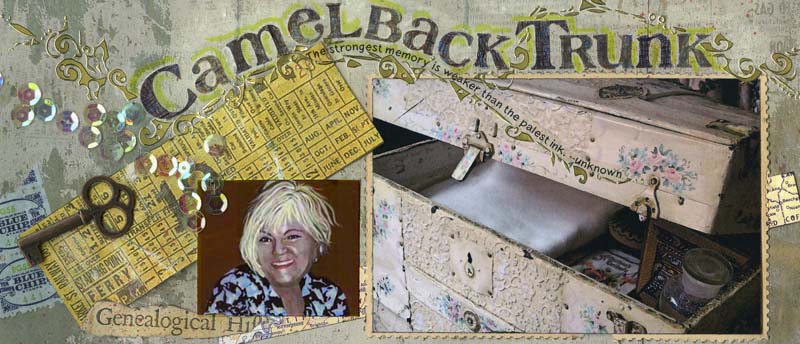
Be careful when adding the fabric and any trim. Keep the joint pliable. By joint, I meet the gutter formed where the front cover meets the binding spine flap. When applying the duct tape leave about a 1/4" gap between the boards so that the cover bends open easily. Then don't muck it up ( a technical term) by layering tacky tape and glue and trim down the joint so thick that you lose bendability. I finished off the two holes for the ribbon with decorative eyelets. Note: The ribbon is not the sole binding cord. The cord is different. I'll talk about the binding in a later post.
This second picture illustrates two sizes of sheet protectors. The smaller sleeve displays a corsage that had been dried between the pages of the original scrapbook. Amazing that it was still in tact after 60 years. Hopefully it will last another 60, now that it is protected.
Remember, I told you that I combined the photos from an accompanying photo album into the pages of the scrapbook. My goal was to maintain the integrity of the original scrapbook design which contained all the spontaneity and randomness of a teenager. I was not concerned with "decorating " or embellishing the original designer's work.



